

The Shojiro Ishibashi Memorial Museum was donated by the Ishibashi Foundation to Kurume City in October 2016, after repairing the Annex of the Ishibashi Museum of Art, to mark the 60th anniversary since opening of the Ishibashi Cultural Center.
Throughout his life, Shojiro Ishibashi dedicated himself to developing his home town of Kurume City in Fukuoka Prefecture. The Ishibashi Cultural Center, which he built in the hope of developing his home town and promoting culture, has become a familiar sight to many people and reinvented itself in line with contemporary needs since opening in 1956. This museum introduces historical documents that describe its transition as a center of artistic culture and the course and personality of Shojiro Ishibashi himself.
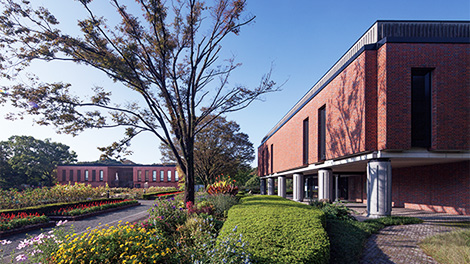
You may have noticed at the entrance of the Culture Center the word “For the welfare and happiness of all mankind.” I hope that the citizens of Kurume will benefit by the facilities available in high art, music, cinema, sports and gardening, and so attain not only a happier, peaceful, active and brighter social life, but also a harmonious family life. Also, I hope it may lead to popularization of wholesome recreation and physical development of young people. Therefore, my fervent wish is that this center will prove to be a contributory factor in the development of Kurume City to a modern cultural city.
From Greeting at the opening of the Ishibashi Cultural Center
(April 1956)
Shojiro Ishibashi
Shojiro Ishibashi was born in Kurume City of Fukuoka Prefecture in 1889. When just 17, he inherited the family business of tailoring and by creating rubber‐soled socks and producing rubber shoes, managed to expand the business into a national orporation. In 1931, he founded Bridgestone Tire Co., Ltd. (current Bridgestone Corporation), succeeded in producing automotive tires domestically and developed the company into a business embodying Japan. Meanwhile, since his youth, he had also worked on many cultural projects, including helping to establish the Kyushu Medical School (current Kurume University) (1928), founding the Bridgestone Museum of Art (current the Artizon Museum)(1952), constructing and donating to the Ishibashi Cultural Center (1956), constructing and donating to the Japanese pavilion at the Venice Biennale (1956), donating a new building to the Tokyo National Museum of Modern Arts (1969) as well as making a number of other donations.His words, “For the welfare and happiness of all mankind.”, reflect Shojiro’s lifelong convictions, having contributed to society through his business management and cultural projects.
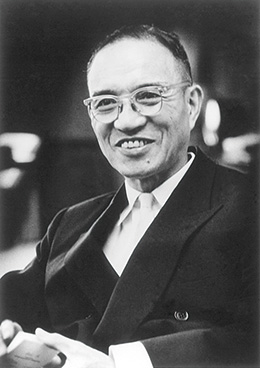
The exhibition room houses various materials with which you can enjoy looking back at the life of Shojiro Ishibashi.
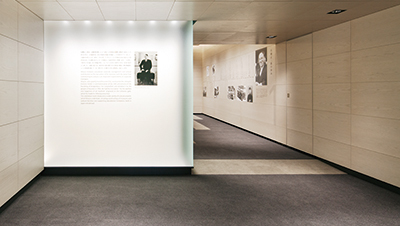
Chronological record corner
His contribution as an enterprise manager of Bridgestone, etc. and many of his cultural promotion achievements are introduced as part of a chronological record.
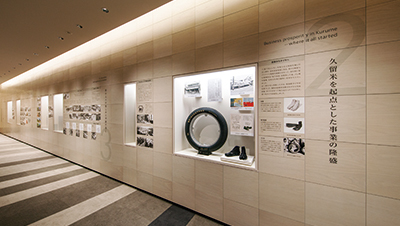
Wall exhibition corner
The achievements of Shojiro Ishibashi are introduced from three perspectives, namely business, culture and art.
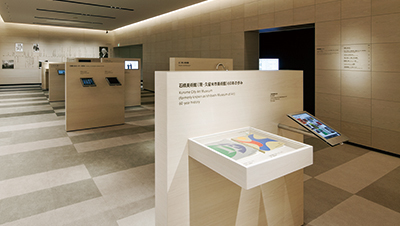
Multimedia corner
Various records, including pictorial, over 60 years of the Ishibashi Museum of Art and the progress of Ishibashi Cultural Center, etc. are presented as historical multimedia materials in video/audio, etc.
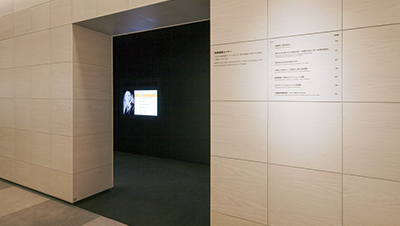
Video-viewing corner
Videos relating to the life and business of Shojiro, as well as his art promotion activies are presented.
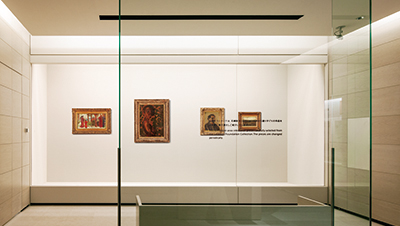
Ishibashi collection picture exhibition
We introduce selected pieces from the Ishibashi Foundation collection, with regularly changing exhibits.
| Author | Name | Year | Material | Holding |
|---|---|---|---|---|
SAKAMOTO Hanjiro |
Harvesting |
c.1898 |
Watercolor on silk |
Private Collection, On loan to Kurume City Art Museum |
| HAYAKAWA Keitaro | Battlefield | Oil on canvas |
Artizon Museum, Ishibashi Foundation, Tokyo |
|
| AOKI Shigeru | Boats at Anchor in Moonlight | 1908 |
Oil on canvas |
Artizon Museum, Ishibashi Foundation, Tokyo |
| KATATA Tokuro | Rose Mallows |
1924 |
Oil on canvas |
Artizon Museum, Ishibashi Foundation, Tokyo |
| TAKASHIMA Yajuro | Chikushi Kanzeon-ji Temple |
1952 |
Oil on canvas |
Artizon Museum, Ishibashi Foundation, Tokyo |
-
Opening Hours/Closed
- Opening Hours:
- 10:00 ‒ 17:00 (No entry after 16:30)
- Closed:
- Mondays (except on holidays or observed holidays), during the exhibition preparation periods, and New Year holidays.
-
Admission
Price - Adult
- Senior(65+)
- University and College Students
¥300* High School Students and younger Free *Free for visitors with tickets to the Kurume City Art Museum (The Main Building).
-
Access
1015, Nonaka-machi, Kurume-shi, Fukuoka 839-0862, Japan
- By air :
- About 50 minutes via Nishitetsu Highway Bus from Fukuoka Airport to Nishitetsu Kurume Station
- Train :
- 20 minutes by Shinkansen or 40 minutes by rapid train from JR Hakata Station to JR Kurume Station.
30 minutes by limited express or 40 minutes by express train from Nishitetsu Fukuoka (Tenjin) Station to Nishitetsu Kurume Station - Bus :
- About 15 minutes from JR Kurume Station, about 5 minutes from Nishitetsu Kurume Station.
Nishitetsu Bus, Routes 1, 7, 8, 9, 20, 22, 25 Get off at “Bunka Center Mae” - On foot :
- About 10 minutes from Nishitetsu Kurume Station.
- By car :
- About 10 minutes from Kurume Interchange. Paid parking available. Cost 200 yen up to the first two hours and 100 yen for each additional 30 minutes.
500 yen per bus when passengers enter the Center (booking required)





